Driving a car with a manual transmission, also known as a stick shift, creates a more connected relationship between a car and its driver. It can seem difficult to grasp but it only takes an afternoon to learn the coordinated motions between hand and feet. Within a few days of practice, it feels as natural as operating a car with an automatic transmission.
What is a Manual Car?
It is a car with a manual transmission instead of an automatic one. The driver must shift the forward gears for the optimal operation of the engine.
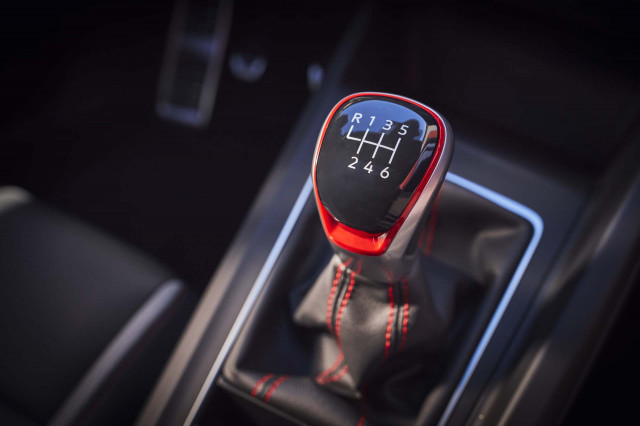

2022 Volkswagen Golf GTI
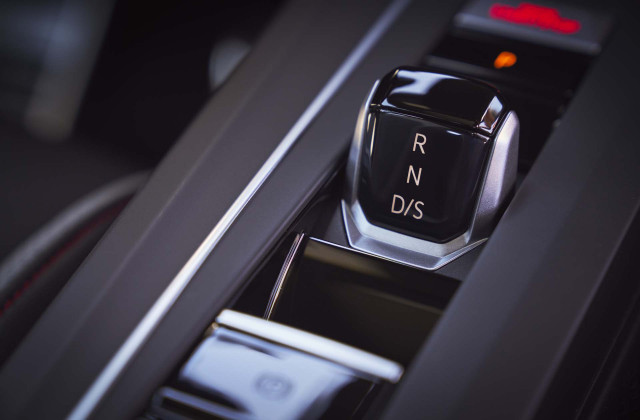

2022 Volkswagen Golf GTI
Manual vs. Automatic Transmissions
Automatic and manual transmission share basic similarities in that they have a reverse gear, a neutral gear, and at least one forward gear, although several forward gears are more common. An automatic transmission has a “Park” gear, whereas a manual transmission relies on a separate mechanical parking brake handle or in more modern cars, an electronic parking brake button. Cars with an automatic transmission may have an extra emergency parking brake that can be foot activated or with an electronic button.
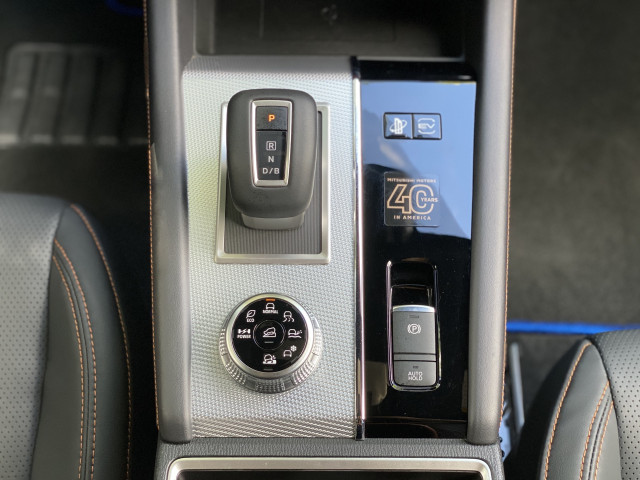

2023 Mitsubishi Outlander PHEV
Automatic Transmissions: An Overview
An automatic transmission is easier to operate but typically more complex to repair. The driver only operates the gas pedal, brake pedal, and steering wheel, leaving the shifting to the machine.
There are many kinds of automatic transmissions, including a continuously variable transmission (CVT), a dual-clutch transmission (DCT), and automatics that have manual overrides. They’re fundamentally the same in that once the driver shifts the gear lever or button into “Drive,” the transmission automatically shifts to the optimal gear based on how much the driver pushes on the throttle pedal and other vehicle inputs, such as if it’s climbing uphill, towing, or carrying a lot of people or payload. Modern automatics range from six gears to 10 gears to an infinite number of gears in a CVT.


2022 Porsche 911 GT3 6-speed manual, Python Green
Manual Transmissions: An Overview
A car with a manual transmission requires drivers to use both feet and both hands in different ways. It will initially sound complex, but once behind the wheel it’s quite apparent and natural.
A manual car has a third pedal called the clutch pedal to be used by the driver’s left foot, and a gated gearbox in the center console to be shifted by the driver’s right hand. Older cars might have a shifter and gate in the floor or on the steering column. A modern manual typically has six forward gears (5- and 7-speeds are also common) and a reverse gear. The driver must simultaneously push down the clutch pedal with their left foot, let off the gas with the right foot, steer with their left hand, and shift with the right hand into the appropriate gear based on speed and other vehicle inputs to keep the engine running in its optimal state.
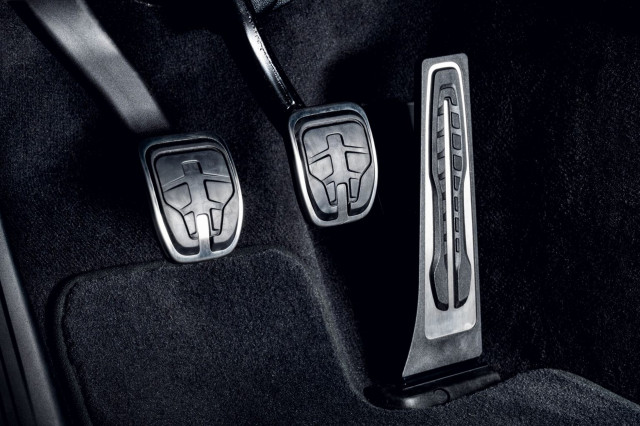

Manual transmission confirmed for Toyota Supra
The trick with a manual transmission is getting going in first gear. If the clutch is released too suddenly and without enough gas to move engine power through the first and largest gear to the drive shaft, the engine can stall. It can also make a loud sputtering noise accompanied by vehicle shudders; if the clutch is not fully depressed, the gears may grind. There’s also risk of the vehicle slightly rolling back on an uphill grade before the first gear is engaged, but many modern manuals have a hill-holder function that automatically prevents rollback. The handbrake can also be used, but we’ll discuss that in the how-to section.
Advantages of a Manual Transmission
The first-gear risks mentioned above may beg the question of why bother with a manual? The short answer: Because it’s fun.
In budget cars, they can be cheaper than an automatic by about $1,000, but roughly only 1% of new cars sold were with a manual transmission in the early 2020s. There is no manual gearbox for electric cars.
Historically, manuals were more fuel efficient than automatics, but then changed for good in 2016, according to the U.S. Department of Energy. They also had a performance advantage with quicker shifts, but that too changed irrevocably in the last two decades.
The biggest advantage of a manual versus an automatic is the unquantifiable fun factor: it provides a more visceral connection to the car.
It could also be argued that drivers operating a stick are less prone to distractions from their phones, but there’s no data to support this.
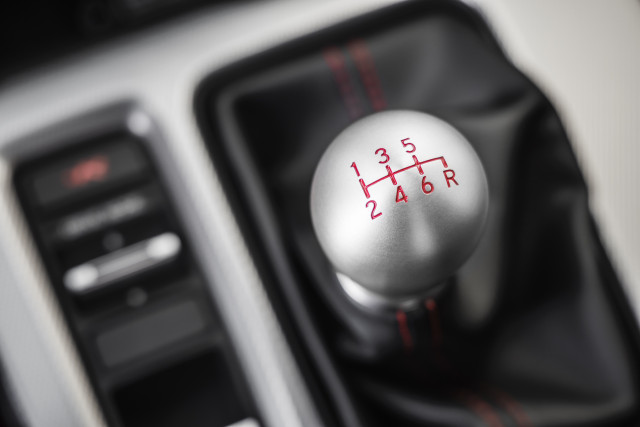

2023 Honda Civic Type R


2023 Honda Civic Type R
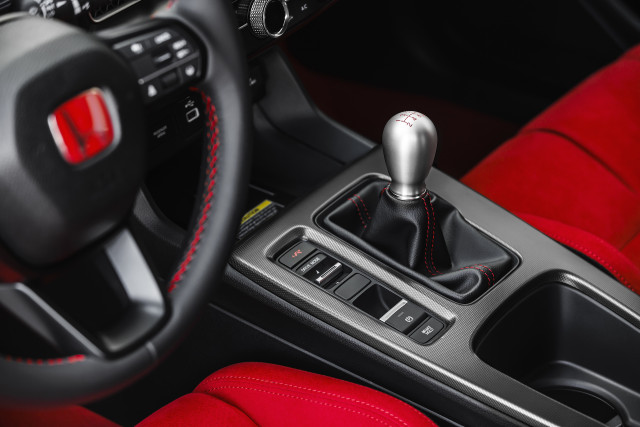

2023 Honda Civic Type R
Learn the Pedals and Gears of a Manual Car
Every manual car has three pedals: the accelerator or gas, the brake, and the clutch. The clutch pedal sits to the far outside (left in left-side drive cars), the brake pedal in the middle, and the accelerator in the inside or far right.
Most modern manuals have six forward gears and one reverse gear arranged in a tree. A ball on the top of the shifter shows a layout of the gears. In the center of the tree is the neutral position, where the shifter remains loose and can be moved side to side with the engine off. The odd-numbered gears slot above, and the even-numbered gears slot below. In the first full slot nearest the driver are the 1-2 gears; then 3-4 in the center; and the 5-6 gears in the right slot furthest from the driver.
How to Reverse a Manual Car
Typically the reverse gear is in the uppermost left position, nearest the driver, although sometimes it can be in the far right lowest position. To shift into it from the neutral position, it usually requires you to push the ball down and slot it into position simultaneously.
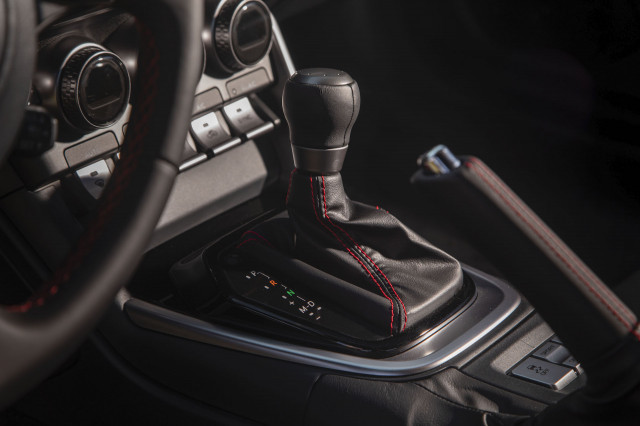

2022 Subaru BRZ
How to Start a Manual Car
-
Start with your car parked on a flat surface, preferably one without any obstacles you might hit, such as a vacant parking lot.
-
Make sure the engine is off and the parking brake engaged. This can be a mechanical handbrake lever in the center console or, in newer cars an electronic brake button, also usually in the console.
-
Press down the clutch pedal with your left foot until it reaches the floor or its stopping point. With your right foot, press the brake, just in case the last driver didn’t engage the parking brake. It’s a double check to make sure the vehicle can’t roll.
-
With your right hand, make sure the gear shifter is in neutral or first gear. A car with a manual transmission can be started in neutral or first gear.
-
Turn the key or press the start button.
-
With your left foot still all the way down on the clutch and your right foot on the brake, disengage the handbrake or electronic parking brake.
-
You’re ready to drive.


2023 BMW M2
How to Drive a Manual Car For Beginners: Step-by-Step
-
Still keeping the clutch pressed in, move the shift lever from neutral into first gear.
-
Take your right foot off the brake and very slowly start letting your left foot off the clutch. The vehicle will gradually begin to creep forward as the gear clutches in, and this slow gradual method will also teach you the engagement point of the clutch, which is slightly different for every model.
-
The alternate method and one you’ll use once you’re driving in traffic is to use your right foot to gently apply gas to get the engine revving, while gently letting off the clutch with your left foot. Don’t use abrupt, hard actions. It’s a smooth, gentle process.
-
Slowly feed in more throttle/gas as you continue to release the clutch pedal until the car is moving forward. Congratulations! You’ve successfully done the hardest part of driving a stick shift: starting from a stop.
-
Now that you’re moving, changing gears is easier. Between 10-15 mph, shift to second gear:
-
push the clutch all the way in
-
lay off the gas
-
move the shifter down into second
-
let off clutch and press gas simultaneously
Depending on the car, your rate of acceleration, and the nature of the transmission, you may have to add a little throttle as you release the clutch—spend some time making your shifts as smooth as possible.
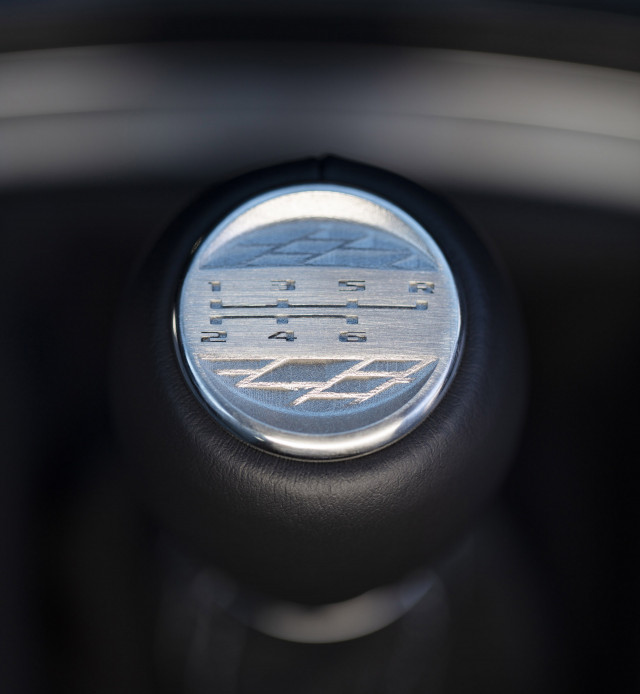

2022 Cadillac CT4-V Blackwing and CT5-V Blackwing manual transmission
When do I Shift a Manual Car?
-
When to shift depends on many factors. If you want the engine to rev higher and the car to go quicker, shift later. If you want to be more efficient and run quieter, shift earlier. The engine noise will tell you the thresholds, and if it doesn’t the tachometer will; upshifting should be done at at least 1,500 rpm but before redlining, which could be 4,500 rpm to 7,000 rpm. Most modern cars also flash instructions in the instrument cluster with a bright arrow or flashing light.
How do I Stop in a Manual Car?
-
To come to a stop, leave the car in its current gear and press the brake pedal gently with your right foot. As the car slows, the engine will slow with it. To avoid killing the engine, you’ll want to press your left foot down on the clutch and move the shift lever to neutral–generally somewhere between 5-10 mph. Release the clutch.
-
You could also engine brake, where you’re downshifting the gears in a reverse order as you might do in more spirited driving. Opinions are divided on if wearing out the brakes is more costly than eventually wearing out an engine or clutch.
-
Once the car is stopped, leave the shift lever in neutral and keep your right foot on the brake until you’re ready to start off again (in which case, repeat the process from step 4 above).


2023 Mazda MX-5 Miata
How to Park a Manual Car
When parking the car, come to a full stop, press in the clutch, shift into first gear, and shut off the car—but don’t forget to set the parking brake. It could be left in neutral as well, but safety says to put it in first. If you left it in neutral and forgot to set the parking brake AND it were on an incline, it could roll.
How to Start a Manual Car on a Hill
If you’re stopped at a light or rail crossing on an incline, be mindful that the car can roll back as you start off in first gear. Many modern manuals have an auto-hold function, but in older cars you may need to set the handbrake, apply gas so it’s in gear, then release the handbrake.
Another method is to use your right foot simultaneously on the brake pedal and gas pedal, or to “heel-toe”: move the toes to the right brake, use the heel to pressure the gas pedal, then gradually let off the clutch, off the brake, then drive. This takes practice, however, and is not advisable for newbies with a car in front of or behind them.
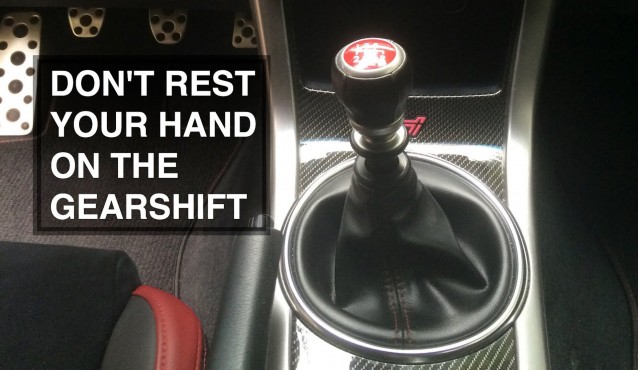

Here are 5 things to avoid doing with a manual transmission
Tips on Driving a Manual: Do’s and Don’ts
-
Don’t rest your hand on the shifter when not shifting; it can wear out the bushings and prematurely age the shifter.
-
Don’t engine rev too much with the clutch engaged; it’ll burn out the clutch.
-
Don’t downshift into a redline; it’ll fry the clutch.
-
Don’t be daunted by learning to give a shift; you’ll pick it up in as much time as it took you to read this.
-
Do practice, practice, practice; it only gets more fun.
